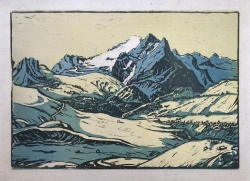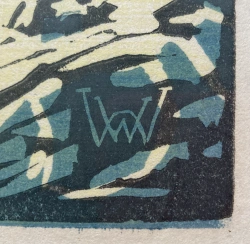…is “old news” by now: Neither when it comes to the effects that can be recognised in old works, nor as an object of art itself.
While the last approach had perhaps already reached its climax with “Soylent Green “, today I have the opportunity to point out the melting of the glaciers in the Dolomites.
I acquired this woodcut a few weeks ago and I couldn’t find out anything about the monogram and thus the artist. Even the respected experts Gerbrand Caspers (curator of Das Haus der Frau and The Linosaurus) and Wolfgang Barina were unable to identify it. But Wolfgang was able to determine the motif, i.e. the mountain, many thanks for that!
Perspective
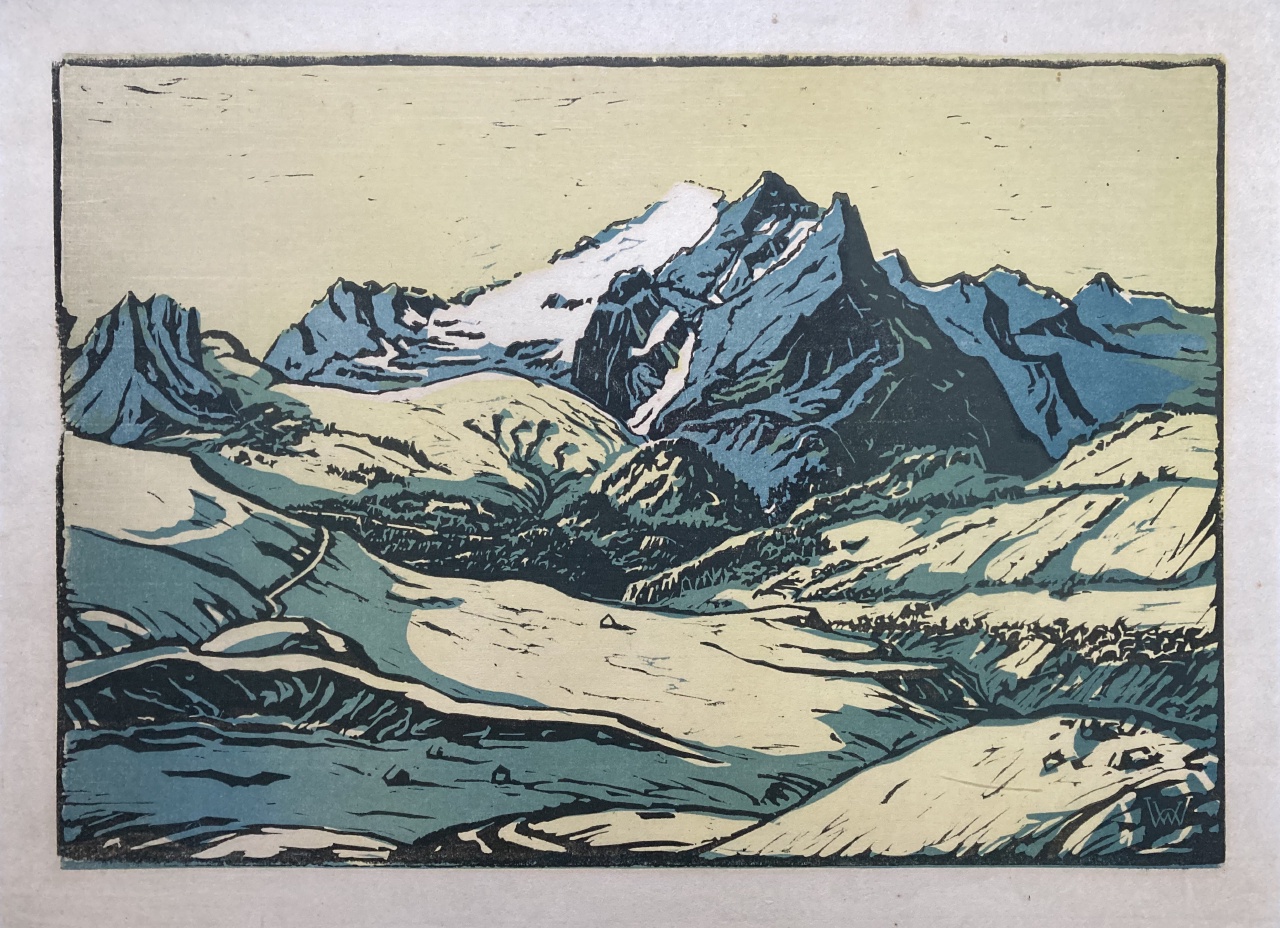
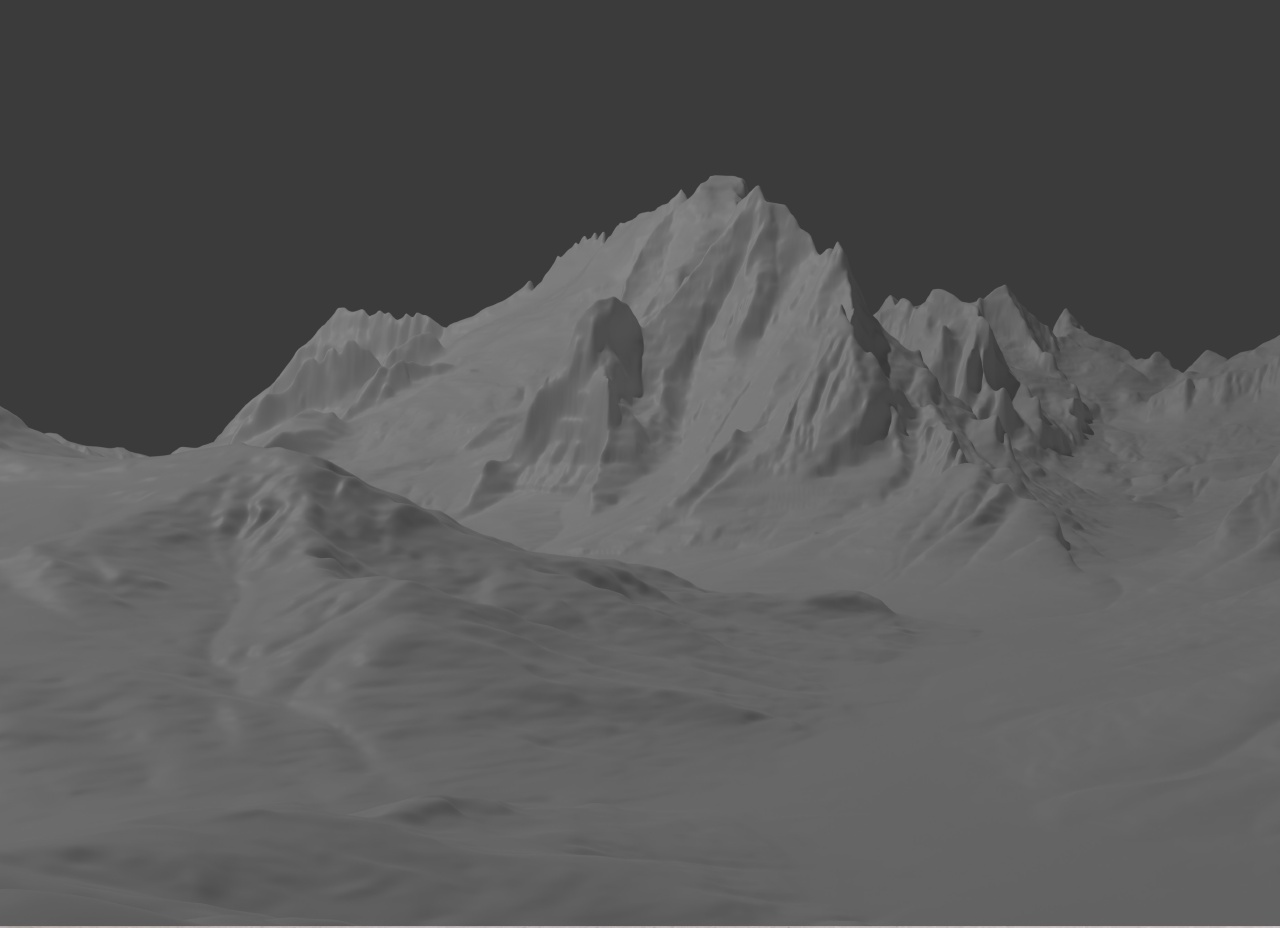
The picture shows the mountain Marmolata, which had a turbulent history, for example during the First World War, from the north, very probably from the vicinity of “falesia Col Rodella” near Canazei. An elevation profile converted into a 3D view (using Blender) helped to determine the perspective more precisely. Minor inconsistencies certainly fall under artistic liberty. For comparison, here is a current all-round view from the specific position:
The glacier
The retreat of the glacier in the centre of the picture is a dramatic contrast to the war. It seems so present here because it is the only part of the picture for which no colour has been used. Something that was represented by an omission is soon really gone:
This glacier, like most in the Alps, is affected by “glacier retreat”. It is currently estimated that it will have disappeared by 2040 - in around 15 years!
As illustrations are more appealing than statistics, here is a comparison with a photo taken in August 2024:

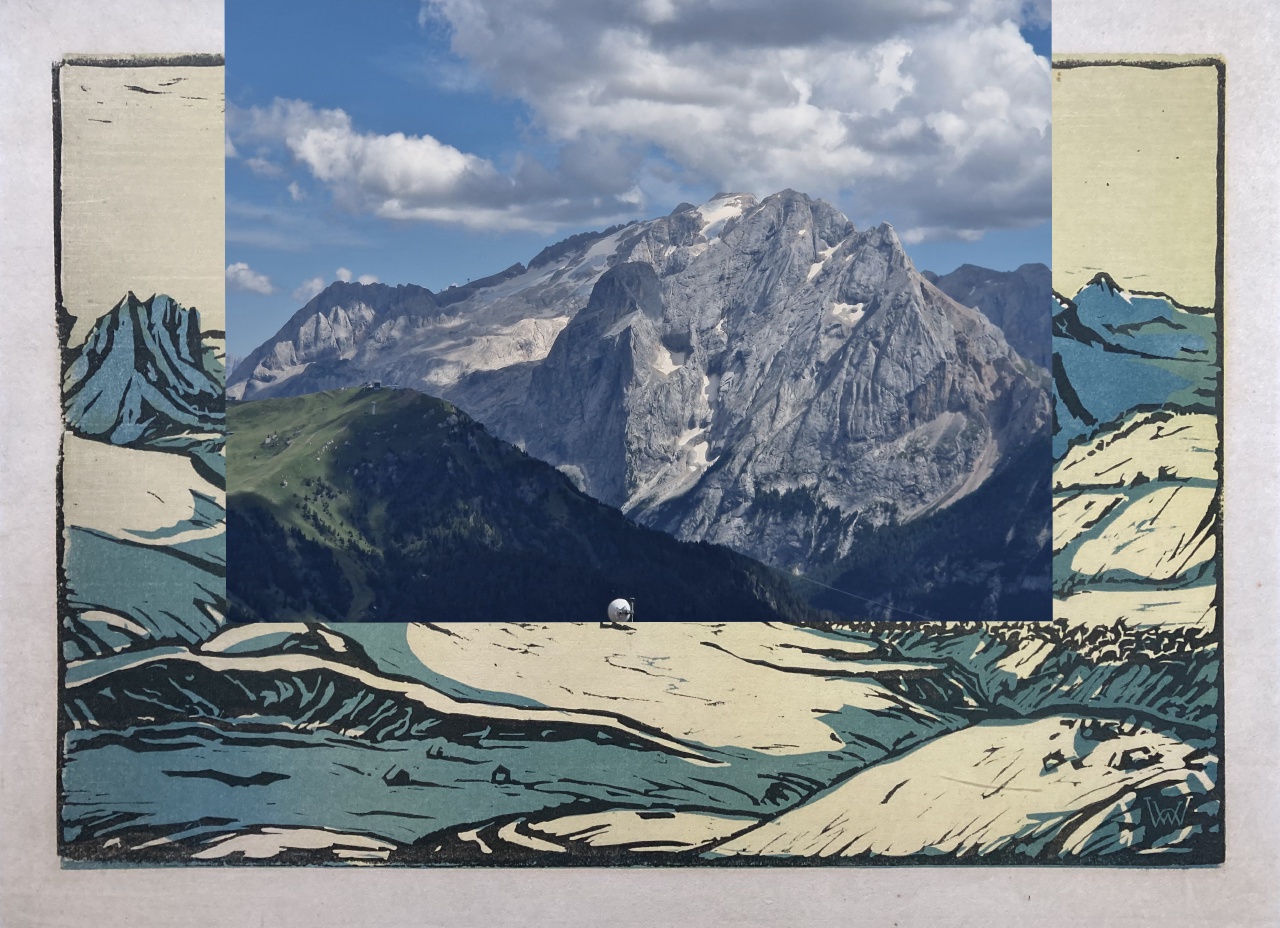
(sky cut)
Notes and acknowledgements
- <img-comparison-slider> is used for the image comparison.
- The Blender Relief Tutorial by Daniel Huffman was the basis for determining the location.
- The height information originates from Tinitaly:
Tarquini S., I. Isola, M. Favalli, A. Battistini, G. Dotta (2023). TINITALY, a digital elevation model of Italy with a 10 meters cell size (Version 1.1). Istituto Nazionale di Geofisica e Vulcanologia (INGV). https://doi.org/10.13127/tinitaly/1.1.
Tarquini S., I. Isola, M. Favalli, F. Mazzarini, M. Bisson, M.T. Pareschi, E. Boschi (2007). TINITALY/01: a new triangular irregular network of Italy. Annals of Geophysics. https://doi.org/10.4401/ag-4424
P.S.: If anyone recognises the monogram, I would be grateful for a hint.
